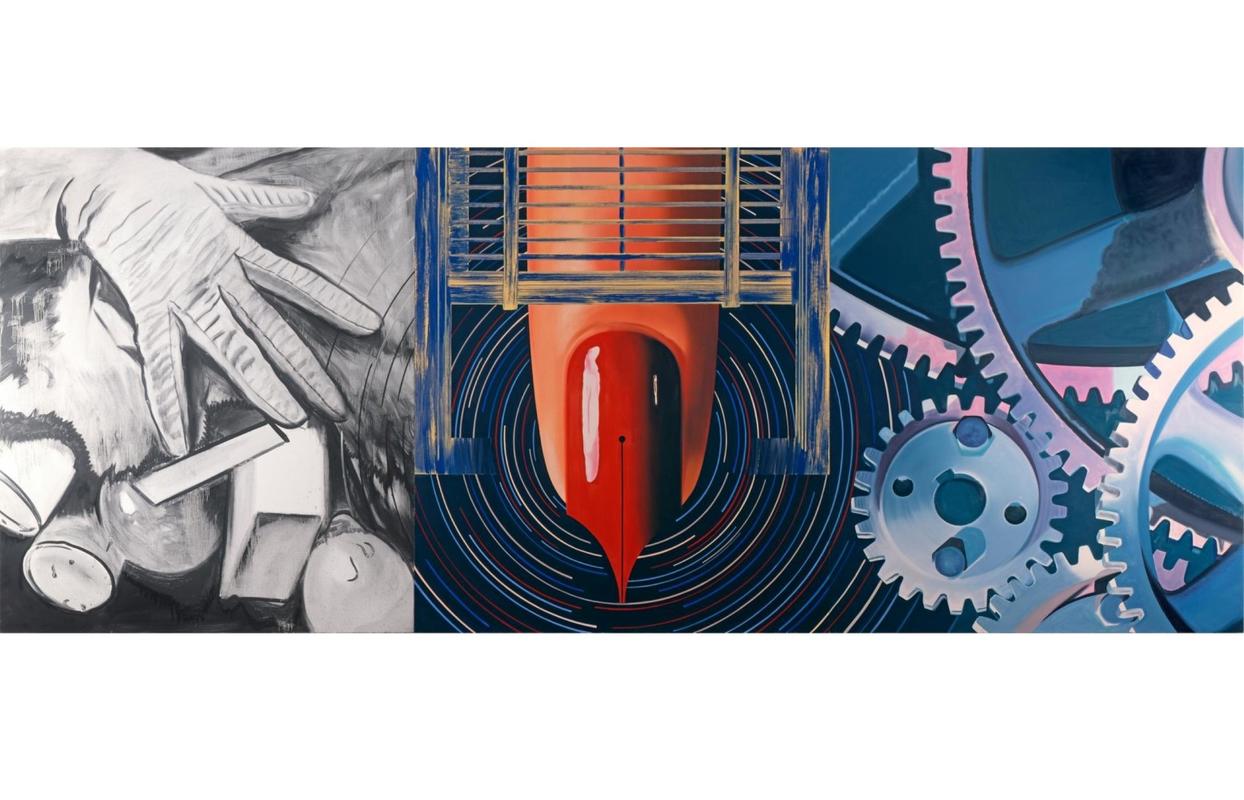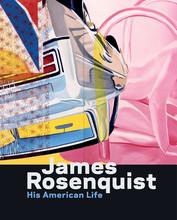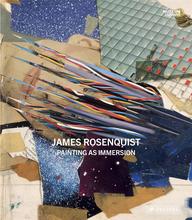More about While the Earth Revolves at Night
- All
- Info
- Shop

Contributor
When describing James Rosenquist’s work, New Yorker critic Peter Schjeldahl declared it was like someone “inviting you to inspect the fist with which he simultaneously punches you.”
Which is an A+ summary. Rosenquist’s stuff does kind of feel like a punch to the face, one of the reasons his ascent was so meteoric— his work, however strange, was always memorable.
After spending his early years as a billboard painter in Times Square, he became known as one of the three major Pop artists of the 1960s, standing alongside Andy Warhol and Roy Lichenstein— even though, by his own admission, they “all emerged separately,” and he didn’t actually meet any of them until after he had made his most iconic pieces. But despite getting grouped in with his other two “pop artist” pals, Rosenquist quickly made a name for himself as a painter of outlandish juxtapositions; he’d pair things as unlikely as spaghetti and a Ford car, and it still, somehow, worked.
While it may not seem like it, While the Earth Revolves at Night is actually one of Rosenquist’s more subdued works. Most of his earlier stuff, like the aforementioned I Love You With My Ford, is much flashier, making great use of bright, neon colors and recognizable cultural images, like Coke cans and the face of JFK. But even though there may be nary a pop icon or neon stripe to be found, the dynamism the three panels of While the Earth Revolves at Night is inarguable— the harshness and specificity of gears turning together on the right, the human folly of dropping a grocery bag on the left, both juxtaposed by the intensity and sensuality of the frame at center. It also contains some fairly classic Rosenquist traits— the outlandish (see: nail that is also a fountain pen), the collaged (see: blinds transposed onto a starry night), and the human (see: the erring hand on the left).
Weirdly, this isn’t Rosenquist’s only While the Earth Revolves at Night. The same year Rosenquist drafted these three panels, he also created another painting with the same title, which is largely similar to the middle panel, but transfers the nail onto a champagne bottle and nixes the guillotine-esque blinds. So if you happen to be a very fancy art collector with a few thousand extra dollars on hand, make sure you know which one you’re getting before you make that final bid.
Sources
- Bancroft, S. (n.d.). James Rosenquist: A Retrospective. The Guggenheim Museums and Foundation. Retrieved September 25, 2021, from https://www.guggenheim.org/teaching-materials/james-rosenquist-a-retros….
- James ROSENQUIST: While the earth Revolves at NIGHT (1982): Available for sale. Artsy. (n.d.). Retrieved September 25, 2021, from https://www.artsy.net/artwork/james-rosenquist-while-the-earth-revolves….
- Schjeldahl, P. (2003, October 20). Time pieces. The New Yorker. Retrieved September 25, 2021, from https://www.newyorker.com/magazine/2003/10/27/time-pieces.
- Sherwin, B. (1970, January 1). Art space talk: James Rosenquist. Art Space Talk: James Rosenquist. Retrieved September 25, 2021, from http://myartspace-blog.blogspot.com/2008/04/art-space-talk-james-rosenq….













